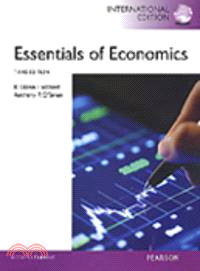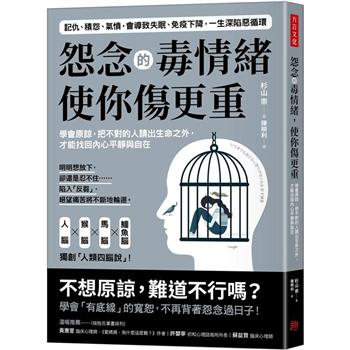| FindBook |
有 1 項符合
Essentials of Economics 3/e的圖書 |
| 圖書館借閱 |
| 國家圖書館 | 全國圖書書目資訊網 | 國立公共資訊圖書館 | 電子書服務平台 | MetaCat 跨館整合查詢 |
| 臺北市立圖書館 | 新北市立圖書館 | 基隆市公共圖書館 | 桃園市立圖書館 | 新竹縣公共圖書館 |
| 苗栗縣立圖書館 | 臺中市立圖書館 | 彰化縣公共圖書館 | 南投縣文化局 | 雲林縣公共圖書館 |
| 嘉義縣圖書館 | 臺南市立圖書館 | 高雄市立圖書館 | 屏東縣公共圖書館 | 宜蘭縣公共圖書館 |
| 花蓮縣文化局 | 臺東縣文化處 |
|
|
- 圖書簡介
For Survey of Economics courses at four- and two-year colleges and universities.
Learn economics through real business examples.
The number-one question students of economics ask themselves is, "Why am I here, and will I ever use this?" Hubbard/O'Brien answers this question by demonstrating that real businesses use economics to make real decisions everyday. This is something all students can connect to, whether they're business majors or not, because students encounter businesses in their daily lives. And regardless of their future career path—opening an art studio, doing social work, trading on Wall Street, working for the government, or bartending at the local pub—students will benefit from understanding the economic forces behind their work.
•Solved Problems throughout the text provide models of how to solve an economic problem by breaking it down step-by-step. Each solved problem includes a problem statement, delineated steps to solve the problem, a graph, and a "Your Turn" feature directing students to a related end-of-chapter problem(s) for immediate practice. This keeps students focused on the main ideas of each chapter, and prevents them from getting bogged down due to a lack of basic math or "word problem" skills.
•MyEconLab integrated throughout brings the text to life for students just when they need it. Through MyEconLab students can access additional, interactive versions of the problems they're working to ensure their mastery of the concepts.
•Real-world business chapter opening cases set a real context for learning, spark students' interest, and provide a unifying theme for the chapter by showing how the economic concepts about to be learned impact a real business.
•Chapter Examples and Figures consistently revisit the business discussed in the opener and use that business (or industry) to motivate the economic principles.
•An Inside Look ends each chapter with a newspaper article illustrating how a key principle in the chapter was used by the chapter-opening case company to make a real business decision. The authors provide an analysis of the article, corresponding graph (s), and Thinking Critically exercises.
New To This Edition
•The new chapter on The Economics of Health Care covers:
◦Health care around the world
◦Information problems and externalities in the market for health care
◦The Patient Protection and Affordable Care Act in the United States
•There is new coverage of the slow recovery from the recession and financial crisis of 2007–2009.
•There is new coverage of initiatives by the Federal Reserve, including quantitative easing and Operation Twist.
•There is new coverage of fiscal policy, including analysis of the debate over fiscal stimulus and the magnitude of multipliers for government spending and taxes.
•All companies in the chapter-openers have been replaced with new companies or updated with current information.
•All chapters include new An Inside Look newspaper articles and analyses to help students apply economic thinking to current events and policy debates.
•There are new Making the Connection features to help students tie economic concepts to current events and policy issues.
•Figures and tables have been updated, using the latest data available.
•Many of the end-of-chapter problems have been either replaced or updated. - 作者簡介
R. Glenn Hubbard - Columbia University
Anthony P. O'Brien - Lehigh University - 目次
PART 1: INTRODUCTION
Chapter 1: Economics: Foundations and Models
Appendix: Using Graphs and Formulas
Chapter 2: Trade-offs, Comparative Advantage, and the Market System
Chapter 3: Where Prices Come From: The Interaction of Demand and Supply
PART 2: MARKETS IN ACTION: POLICY AND APPLICATIONS
Chapter 4: Market Efficiency and Market Failure
Chapter 5: The Economics of Healthcare
PART 3: MICROECONOMIC FOUNDATIONS: CONSUMERS AND FIRMS
Chapter 6: Firms, the Stock Market, and Corporate Governance
Chapter 7: Consumer Choice and Elasticity
Chapter 8: Technology, Production, and Costs
PART 4: MARKET STRUCTURE AND FIRM STRATEGY
Chapter 9: Firms in Perfectly Competitive Markets
Chapter 10: Monopoly and Antitrust
Chapter 11: Monopolistic Competition and Oligopoly
PART 5: MACROECONOMIC FOUNDATIONS
Chapter 12: GDP: Measuring Total Production and Income
Chapter 13: Unemployment and Inflation
PART 6: LONG-RUN AND SHORT-RUN FLUCTUATIONS
Chapter 14: Economic Growth, the Financial System and Business Cycles
Chapter 15: Aggregate Demand and Aggregate Supply Analysis
Appendix: Schools of Macro Thought
PART 7: MONETARY AND FISCAL POLICY
Chapter 16: Money, Banks, and the Federal Reserve System
Chapter 17: Monetary Policy
Chapter 18: Fiscal Policy
Chapter 19: Comparative Advantage, International Trade, and Exchange Rates
零的代價:中國在新冠疫情期間和其後的政策失誤
江恩角度K線:華爾街交易成功率90%的投資傳奇,用166張K線圖教你看出支撐與壓力,抓住波段買賣點,暴賺5000萬美元!(熱銷再版)
會計學歷年試題+模擬考
會計學完全攻略
自由選擇背後的行為賽局:讀哪間學校、跟誰結婚、是否生小孩、想與誰為鄰……諾貝爾經濟學獎得主教你繞開從眾偏誤,在人生關鍵時刻做出最佳決定
第1名業務養成術:成為業務神人的10大關鍵
別再看股價了!:每次查看股市都賠錢?最簡單的投資策略,每年交易4次就能選中贏家!
不動用武器的戰爭:資源、貿易、數據,交織全球經濟大戰略
5年從零到500萬的理想生活:5千元就能開始!克服月光和漏財,不壓抑需求也讓資產成長有感
|












